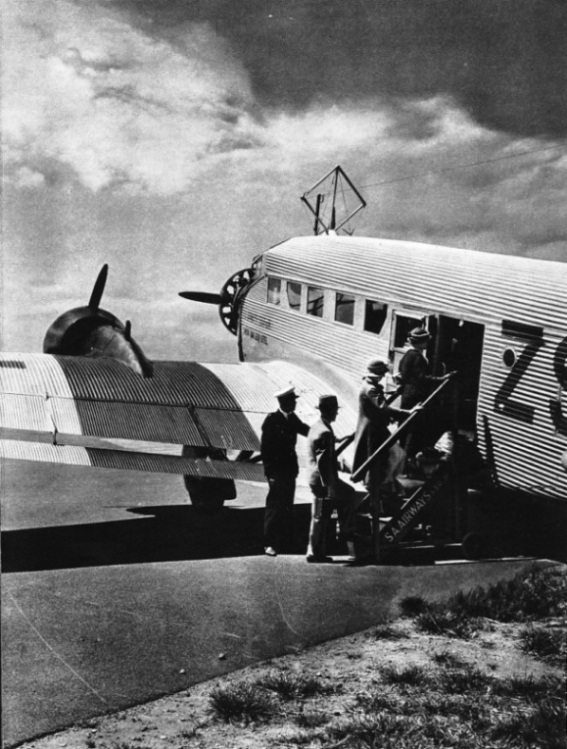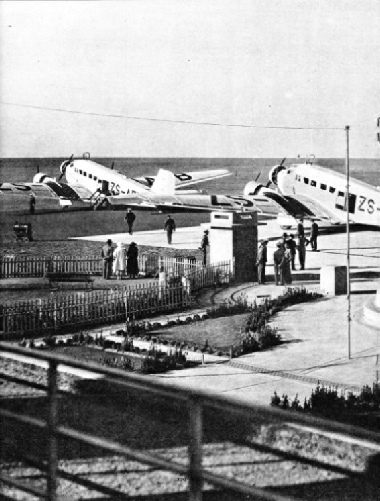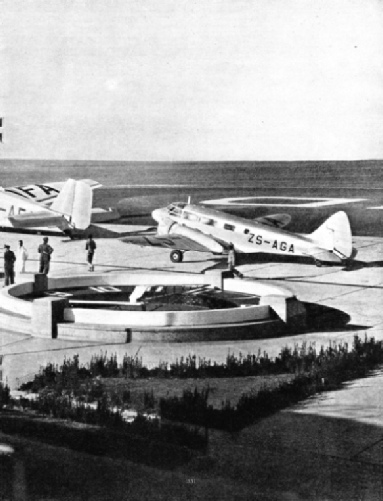
© Wonders of World Aviation 2015-


Part 12
Part 12 of Wonders of World Aviation was published on Tuesday 24th May 1938, price 7d.
This part included a central photogravure supplement showing South African airports. This section illustrates the article on South Africa’s Air Routes. The final photogravure illustration begins the article on How Maps Are Made.
The Cover
Our cover picture this week shows a Supermarine Walrus being lifted into HMS “Devonshire”. The Supermarine Walrus type of single-engined amphibian was designed for fleet-spotting work, and was adopted by the Admiralty for use in the Fleet Air Arm in 1935. These aircraft have a length (on chassis) of 37 ft 7-in and a span of 45 ft 10-in. The engine is a Bristol Pegasus VI.
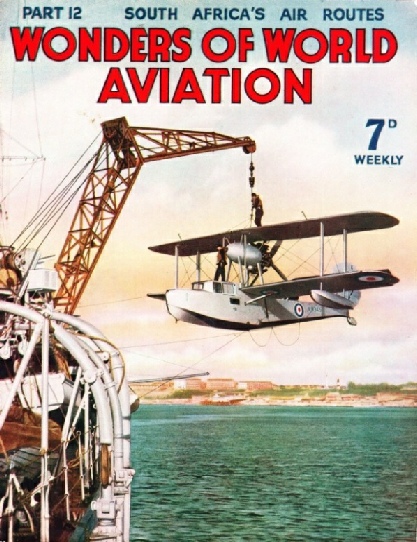
Contents of Part 12
Australia’s Civil Aviation (Part 2)
In this chapter the development of Australia’s civil aviation is described. The article is concluded from part 11.
This is the third article in the series Air Routes of the World.
Flights of Fancy
Some of the fantastic contraptions invented by man in his attempts to conquer the air. The earliest efforts and ideas of would-be flying men may appear to be ludicrous and often to border on lunacy. But it would be scarcely fair to deride them as eccentric. Many have declared that the freakish products of over-ingenious inventors have no place in the history of aircraft, bit there is little doubt that these pioneers did create an interest that these pioneers did create an interest in aeronautical invention.
Representative Types of Continental and American Aircraft -
The second diagram appears in Part 13.
South Africa’s Air Routes Photogravure Supplement - 2
AIRCRAFT IN FRONT OF THE BUILDINGS AT THE RAND AIRPORT. With the completion of work on this airport, the total cost is estimated at £400,000. Within the circular concrete parapet is a large clock; its face and hands are specially designed to be easily read from the air. The waiting aeroplanes are two Junkers three-engined machines and an Airspeed Envoy.
The air routes of South Africa are fitting reminders of Africa’s debt to aeronautics. Sir Alan Cobham’s pioneer Empire flights showed what great possibilities for improved transport were latent in Africa. These latent possibilities are now being further explored and developed, and it seems probable that aviation will play a more important part in the progress of Africa than in that of any other continent. The great distances to be covered, the large number of suitable alighting places, and the vastness of Africa’s resources render that continent exceptionally suitable for development.
This is the fourth article in the series Air Routes of the World.
Converting air photographs into conventional maps. This is another fascinating chapter in the series on Air Photography. This subject has so many facets of interest that only the recognized expert can deal faithfully with it. Many readers who have not appreciated the significance of air photography will be interested to know of its amazing applications. In one air photograph, taken in America, a range of mountains that was 600 miles away from the camera was clearly visible. This chapter describes the methods by which flying maps are made.
Geoffrey de Havilland (Part 1)
Geoffrey de Havilland is a British pioneer who helped to build up a vast industry. Some of the stories of the makers of air history are romantic, if only because of the rapidity of development which they disclose. The story of Geoffrey de Havilland is the story of a pioneer who, from small beginnings, has piloted his own machines to outstanding successes. This chapter is concluded in part 13.
It is the fifth article in the series on Makers of Air History.
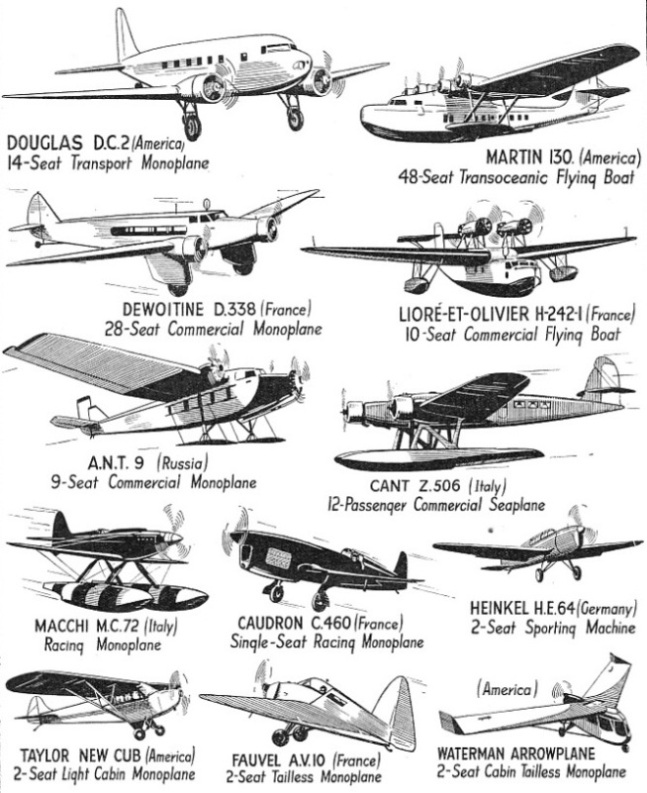
South Africa’s Air Routes
Photogravure Supplement
PASSENGERS BOARDING ONE OF THE JUNKERS AIR LINERS of South African Airways. This picture shows the corrugations on the metal covering of the wings. These corrugations assist in stiffening the wings against torsion. A flap runs along the length of the trailing edge of wither wing, and is so mounted that it gives a double-wing effect. It can be sued to vary the camber of the wing and thus increase the lift.
